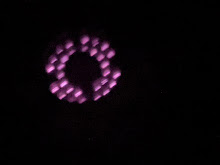I put together a simple Perl script which uses the 1-minute-resolution historical data from the TED-5000 to build a simple graph using Chart::Clicker, like this:
#! /usr/bin/perl #
# Ted-5000 Chart script - Copyright 2013 by Kevin Kadow
# This program is free software: you can redistribute it and/or modify it under the terms of the
# GNU General Public License as published by the Free Software Foundation, either version 3 of the License,
# or (at your option) any later version. Use this at your own risk, no warranty is expressed nor implied. YMMV
#
#
use Time::Local;
use LWP::Simple;
use Chart::Clicker;
use Chart::Clicker::Data::Series;
use Chart::Clicker::Data::DataSet;
use Chart::Clicker::Renderer::Area;
use Chart::Clicker::Axis::DateTime;
use List::Util qw(min max);
# Variables you need to edit
#
my($ip,$mtuid)=("TED5000","0"); # Replace TED5000 with IP address or hostname of your TED
my $chart_png="/var/www/htdocs/plotwatt/recent.png";
my $time_zone="America/New_York";
# Variables seldom edited
my $modulus=2;
my $records=180;
my $volts_minumum=110;$debug=0; # Based on the TED API
my $url="http://$ip/history/minutehistory.xml?MTU=$mtuid&COUNT=$records&INDEX=1";
my $content = get $url;
die "Couldn't get TED 5000 history from $url" unless defined $content;
#
# Parse the history, turn it into a list of $meter,KW,timestamp,...
my($firstdate,$lastdate);
foreach $line (split(/[\n\r]+/,$content)) {
$count{'lines'}++;
chomp $line;
my($kw,$mtu,$date,$power,$timestamp);
if($line=~m!(\d+) (.+) (\d+) \d+ (\d+) ! || !length($line));
last if ($line=~m! !);
warn "\nBad line '$line'\n\n";
$count{'could not parse'}++;
}
#
# Print a bunch of handy stats, if debugging is on.
#
if($debug) {
warn "Sending $postdata\n" if($debug >1);
warn "Results of parsing TED data:\n";
foreach $key (sort keys %count) {
warn "\t$key\t$count{$key}\n";
}
}
#
# Build the chart
#
my $points = scalar @watts;
print "Will chart $points from Watts @watts\n" if($debug);
if($points < 2) {
warn "Trying to chart $points datapoints\n";
return(undef);
}
#
# Build a chart object
#
my $chart = Chart::Clicker->new;
my $dstamper=Chart::Clicker::Axis::DateTime->new(position => 'bottom', orientation => 'horizontal', time_zone => $time_zone);
my $context = $chart->get_context('default');
$context->range_axis->format('%.3f');
$context->domain_axis->ticks( 6 );
$context->domain_axis($dstamper);
my $watts_line = Chart::Clicker::Data::Series->new({
keys => \@timestamps,
values => \@watts,
name => 'Kilowatts',
});
my $wcontext= Chart::Clicker::Context->new( name => 'Watts' );
$chart->add_to_contexts($wcontext);
my $wdataset = Chart::Clicker::Data::DataSet->new( series => [ $watts_line]);
$wdataset->context('Watts');
$wcontext->range_axis->format('%.2f');
$wcontext->range_axis->range->min(int(min(@watts)));
#$wcontext->domain_axis->hidden(1);
#$wcontext->domain_axis->ticks( $points );
$wcontext->domain_axis($dstamper);
$chart->add_to_datasets( $wdataset );
my $volts_line = Chart::Clicker::Data::Series->new({
keys => \@timestamps,
values => \@volts,
name => 'Volts',
});
my $vcontext= Chart::Clicker::Context->new( name => 'Volts' );
$chart->add_to_contexts($vcontext);
my $vdataset = Chart::Clicker::Data::DataSet->new( series => [ $volts_line]);
$vdataset->context('Volts');
$vcontext->range_axis->format('%.0f');
$vcontext->range_axis->range->min($volts_minumum);
#$vcontext->domain_axis->ticks( 6 );
$vcontext->domain_axis($dstamper);
$chart->add_to_datasets( $vdataset );
$lastdate=~s/:00$//; $firstdate=~s/:00$//;
$chart->title->text("TED $firstdate through $lastdate");
my $renderer = Chart::Clicker::Renderer::Area->new( opacity => .75, );
$chart->set_renderer($renderer,'Watts');
$chart->write_output( $chart_png );
exit(0);

